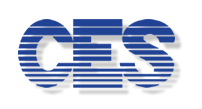The Florida DOH code requires that a pool water test be taken every 24-hours, 7 days a week… yes 7 days a week. Some facilities are not complying with this regulation and are fudging their log sheets, or resorting to what is known as the “pencil test kit” to fill in the missing days. Not a great idea.
If you are in this group, sit tight, we may have a solution… more to come later.
But other agencies and best practice also dictate that tests need to be completed even more often depending on your circumstances. What do we mean? Read on.
The Model Aquatic Health Code (AKA best practice) recommends different test intervals and refers to a test kit as a Water Quality Testing Device or (WQTD). First of all, the WQTD needs to be Certified (for accuracy) to NSF Standard 50. There are only 3 on the approved list, including CES’s SpinDisc model.
Frequency of Testing:
- The MAHC requires that chemical tests for Chlorine and pH be taken before the venue opens for the day.
- For manually fed pools (no chemistry controller), tests must be retaken every two hours.
- For automated pools, tests should be taken every 4 hours. (See how much time you’re saving!)
- ORP readings should be noted on the log sheets at the time of the tests (CES logs have recommended this since the 1980’s)
- Salt, Calcium Hardness and Total Alkalinity should be tested weekly.
- Cyanuric Acid (CYA or Stabilizer) should be tested monthly.
- TDH should be tested quarterly.
Where to test:
We recommend that the water tests be taken from the controller sample port, and this is supported by the MAHC. Why? That is the best overall water sample including the entire perimeter of the pool and the main drain. But, DOH tests from the pool right? So, we recommend that you take a periodic test from the pool and compare it against the controller. IF you do take the test sample from the pool, the MAHC recommends that the sample must be:
1) At least 18 inches (45.7 cm) below the surface of the water, and
2) A water depth of between 3 to 4 feet (91.4 cm to 1.2 m) when available, and
3) A location between water INLETS.
It is also recommended to take great care with storage of pool testing reagents, as they will go bad under extreme temperatures. Also all reagents have a posted expiration date, and an out-of-date reagent is the Number 1 cause of skewed readings.
Please let us know if we can assist you in your testing needs… the CES field team uses the SpinDisc model to crank out NSF-certified tests for 11-parameters in one minute, and the CL/pH test in 30 seconds, and we also support several test kits with a great supply of fresh test kits and reagents.




